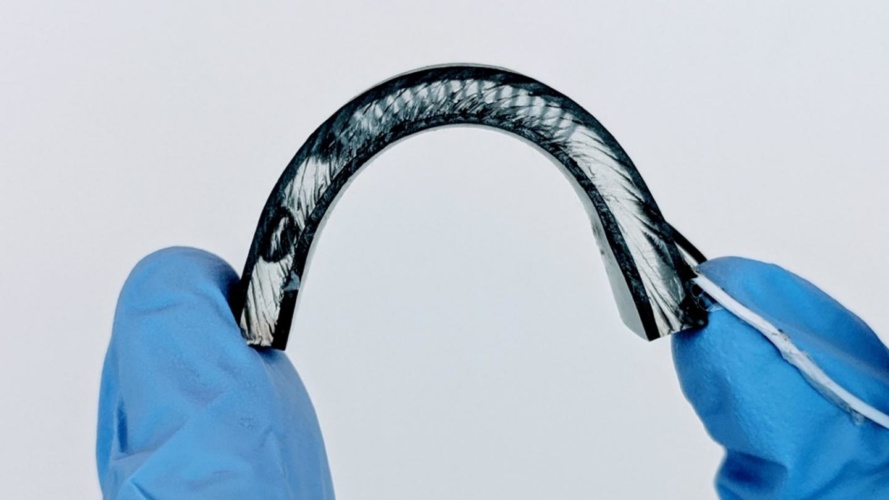
Described in Applied Energy, the flexible thermoelectric generator, or TEG, builds on work published by the same team in 2017. That device used semiconductor elements that were connected electrically in series using liquid-metal interconnects made of EGaIn - a non-toxic alloy of gallium and indium. EGaIn provided both electrical conductivity and stretchability, with the entire device embedded in a stretchable silicone elastomer.
Proof-of-concept points to flexible wearables
Self-healing thermoelectric material adds durability to wearables
The upgraded device uses an improved silicone elastomer that envelops the EGain interconnects. It employs roughly the same architecture as the 2017 iteration, but significantly improves the thermal engineering while increasing the density of the semiconductor elements responsible for converting heat into electricity.
According to research lead Mehmet Ozturk, an NC State professor of electrical and computer engineering, the advance brings flexible TEGs closer to the efficiency of rigid devices, which have traditionally outperformed their flexible counterparts in harvesting body heat.
"The key here is using a high thermal conductivity silicone elastomer doped with graphene flakes and EGaIn," Ozturk said. "Using this elastomer allowed us to boost the thermal conductivity - the rate of heat transfer - by six times, allowing improved lateral heat spreading."
"The flexible device reported in this paper is significantly better than other flexible devices reported to date and is approaching the efficiency of rigid devices, which is very encouraging.”
According to Ozturk, one of the strengths of the technology is that it eliminates the need for device manufacturers to develop new flexible, thermoelectric materials because it incorporates the very same semiconductor elements used in rigid devices. He said future work will focus on further improving the efficiencies of these flexible devices.




Swiss geoengineering start-up targets methane removal
No mention whatsoever about the effect of increased methane levels/iron chloride in the ocean on the pH and chemical properties of the ocean - are we...